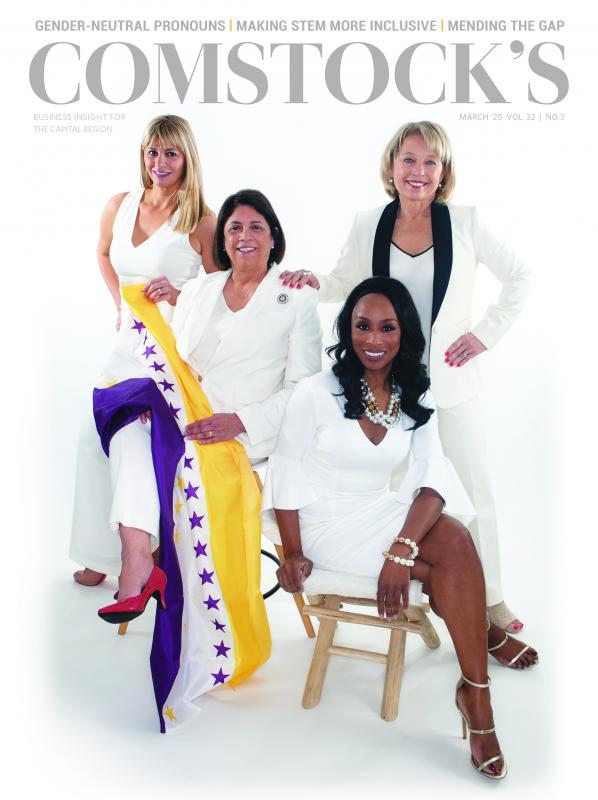The AARP has a family caregivers discussion Facebook group with just 2,100 members, though a highly active feed. Most of the posts are written by women, though men find advice and solace there also. It’s a safe place to talk about things they refrain from talking about in public, because most “informal” caregivers (those not professionally employed in the field and often going without pay) don’t have decades of experience on which they can rely.
The Facebook posts range from the mundane (how to convince loved ones to bathe more frequently or deal with an ill-fitting colostomy bag, or suggesting tools like electric toothbrushes, tiny GPS trackers that can be slipped into a shoe and home cameras for monitoring senior parents from hundreds of miles away) to the serious (end of life details, or who to call when a loved one dies and questions of what will happen next). Frequently, the posts edge toward despair: “I don’t have two brain cells to rub together,” “this is the hardest thing I’ve ever done in my life,” “I am frightened,”
“I am entirely alone.”
Despite the feeling of isolation that comes with being an elderly loved one’s caregiver, the statistics show these people are far from alone, and the majority are women. The aging population is growing: Adults over 65 make up 20 percent of the U.S. population, compared to just over 15 percent five years ago, according to U.S. Census Bureau data, and that number is projected to reach almost a quarter of the population by 2060.
Annie originally moved her parents from the North Bay to the Sacramento region to help care for her two young children, who were born with physical impairments and neurological and cognitive issues that resulted in developmental delays. She had given up her role as a vice president in a high-powered corporate marketing job to care for them, and her parents were able to help.
That was more than a decade ago. Annie, whose name has been changed to protect her identity and that of her children, has since built a successful business that allows her to work from home and keep her schedule more flexible. Her children have outgrown or overcome many of their developmental delays, but they still require a degree of hands-on care to manage things like extracurriculars and individualized education plans. However, in that time, Annie’s parents, now in their 80s, have slowed down. Rather than offering extra sets of hands, they now present an extra set of demands.
Annie, in her 50s and an only child, sees herself as part of the “sandwich” generation. As she prepares for her children to leave home, pursue higher education and build their own lives, Annie’s own parents are preparing to transition into her home. Annie foresees a move in her and her husband’s future, into a home with a granny flat in the back where her parents can live, enabling her to eventually provide more hands-on care. “It’s just a never-ending cycle of life, work and caretaking,” she says, “and it’s going to ramp up a lot more very soon.”
“This is becoming real for me, and I don’t even know the solution,” Annie says. “This has been a very long-haul situation of juggling back and forth, back and forth, and then when you get closer to the peak of it and you think you’re going to be looking down, you’re not looking down. I’m looking up another hill, a pretty big hill, and I don’t know what to do.”
A Growing Need
According to AARP research, the economic value of services provided by informal caregivers is steadily increasing, up almost 80 percent from 2007 to 2013, when it reached $470 billion. In 2015, 34.2 million Americans — about 10 percent — had provided unpaid care to an adult over 50 in the past year, and 40 percent of those were in “high burden situations,” with the recipient needing significant care with daily activities. And while the ratio of male to female informal caregivers has tightened in recent years (34 percent versus 66 percent in 2009, 40 percent to 60 percent in 2015), AARP finds women take on the most burdensome tasks, such as bathing, toileting and dressing, while men are more likely to help with less demanding tasks, like financial and care management. Female informal caregivers also tend to spend more hours each week on caregiving than their male counterparts.
Dr. Ashkan Javaheri, head of geriatric medicine for Dignity Health, sees the trend playing out in his professional life. “Based on my experience, the majority of the caregivers we see are women,” he says. Javaheri also says the growing senior population requires a higher level of care, meaning heavier responsibilities for caregivers.
Javaheri and other medical professionals like his colleague Lisa Adamek, a geriatrics nurse who leads the house call program for Mercy Medical Group (part of Dignity Health), say they are aware of the difficult position many informal caregivers find themselves in. Launched 12 years ago, the program supports primary care doctors with homebound geriatric patients, essentially bringing the doctor’s office to the patient’s home. A typical visit will include a health evaluation by a geriatric specialist, who also arranges prescriptions and provides counseling.
“One way that I usually approach my patients is that I’m not just there to see the patient,” Adamek says. “I also tell those involved, ‘You guys are a unit, and I’m wrapping my arms around all of you,’ because if the caregiver starts to have burnout or imbalances that (cause) them distress, it is going to directly affect my patient.”
They try to connect patients and their caregivers to resources that might help ease the burden, shore up reserves and safeguard the caregiver’s mental health — things like adult day care centers or other forms of respite and financial resources that might enable a caregiver to hire help. Sometimes, they agree, a caregiver simply needs to feel seen.
“As a medical provider, I try to acknowledge that,” Javaheri says. “I try to tell them, ‘I understand that you are providing care to your loved ones, and I understand how difficult that is.’ Most of the time, they feel unappreciated. They feel they do all this work, and nobody sees it.”
The Budget for Aging
It’s hard to afford help. Home health aides can cost upward of $4,000 each month, as do private rooms in assisted living centers, and a room in a skilled nursing facility can set one back at least $8,000 each month. Depending on the circumstances and type of facility, patients may be eligible for assistance through Medicare or Medi-Cal. Medicare generally does not cover long-term stays, but for individuals with limited resources or income, Medi-Cal will contribute to long-term care.
Sharon Martarano took care of both her parents in their golden years. Her mother had already died when Martarano was laid off from her position as facilities manager for the Sacramento Children’s Home. She decided retirement was the best option, allowing her to be more available for her father, who she helped move from his home to a facility that allowed him to transition from independent living to assisted living and, finally, to skilled nursing. (Martarano’s husband, Steve, is a frequent contributor to Comstock’s.)
As finances grew tighter, she remembered a segment she had heard on NewsRadio KFBK’s “Assets and Aging” program that referenced a financial assistance program through the U.S. Department of Veterans Affairs. Since her father was a World War II veteran, perhaps he qualified. She says it was a lengthy process involving a lot of paperwork, but in the end, it “made the difference” in her father being able to afford an assisted-living facility.
Annie’s parents are unable to pay for assisted-living care. She says that despite working hard all of their lives, ongoing health issues and a lack of insurance consistently depleted any savings they built up. Elder care is a complex puzzle of balancing time and resources, hands-on care versus paid services, with no easy answers. “It’s just hard to map all of that out,” Annie says, “because you’re already doing so much and strapped for time as it is.”
Javaheri says when he started his career, he was naively baffled by the aversion to assisted-living and skilled-nursing facilities, given how difficult it can be to provide care in a home setting. Twelve years later, he finds himself less confused. “I realized that … being a caregiver to your loved one is actually a very satisfying role,” he says. “It’s a rewarding role besides all the challenges. … There is more to caregiving, and I think part of it is the satisfaction you get as a caregiver to your loved ones.”
When Martarano’s father struggled transitioning from independent to assisted living, she set up a small art studio in his quarters. Though he’d spent his career in advertising, he did pen-and-ink drawing as a hobby. This personal touch allowed him a smoother transition into his new quarters, and “he grew to love assisted living,” she says.
For Annie, worries surface at night. “That’s usually when my anxiety hits,” she says. “It’s the middle of the night, and I’ll wake up just spinning on this or that. … I don’t let it overtake me, because I understand why it’s there. I try to focus on solutions; I just don’t have all the solutions for this next hill. I think there is a big undercurrent of stress, more than I know.”
Even with so much of the future uncertain, Annie says she and her parents have always had a close relationship, and caretaking for them now is a given. “It’s a lot, but I wouldn’t have it any other way,” she says. “I’m glad to be able to be there for them. It worries me what would happen if I wasn’t able to be there.”
–
Get all the profiles in our biggest-ever Women in Leadership issue delivered to your inbox: Subscribe to the Comstock’s newsletter today!





Comments
I'd like to point out that Lisa Adamek, is a GNP (Geriatric Nurse Practitioner), not a geriatrics nurse. She was also honored by American Nurses Credentialing Center for a 2019 Certified Nurse Award recipient for the Gerontology Nurse Practitioner category.
A handbag carried during the day is usually larger than the one that you'll be taking to dinner. No matter what the occasion, it is never appropriate to put one's handbag on the table-it is considered extremely rude no matter how expensive or beautiful it is. We often place our handbag on the kitchen counter, a bench, and some even momentarily meet the floor so for hygiene reasons alone, it is not acceptable.